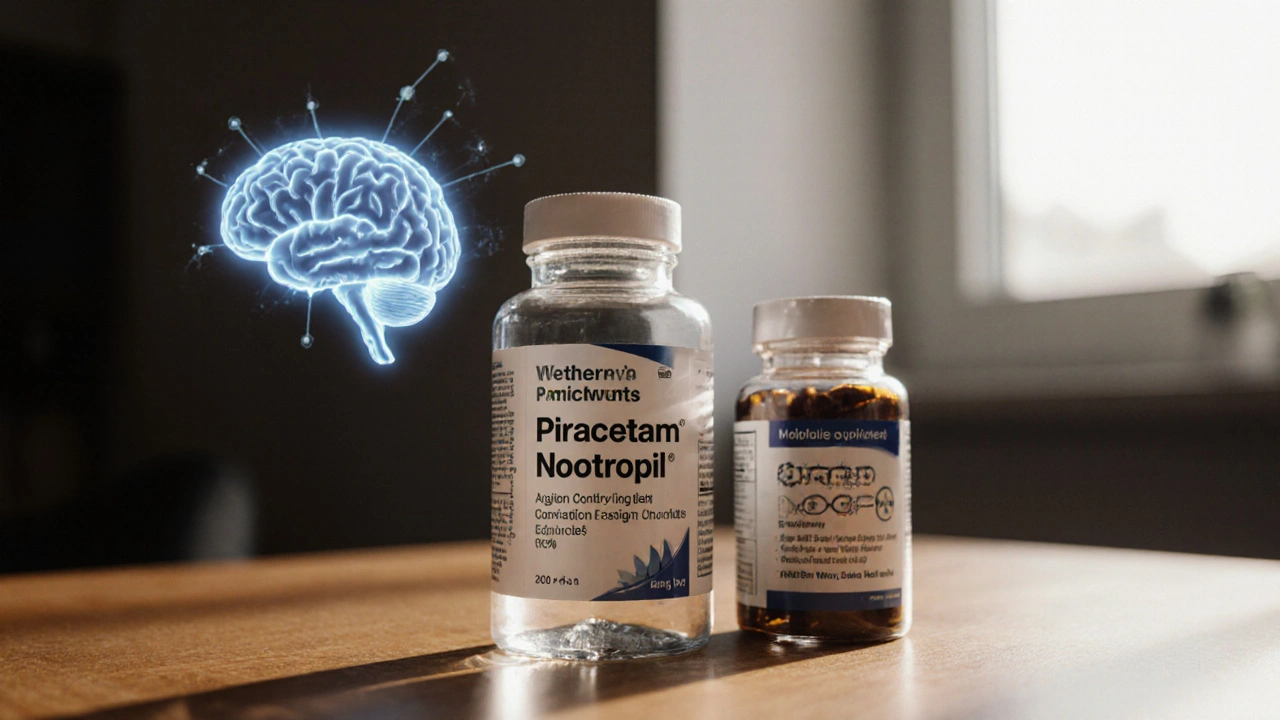When talking about Cognitive Enhancer, a substance or supplement that aims to boost mental functions like memory, focus, and motivation. Also known as nootropic, it sits at the crossroads of nutrition, pharmacology, and lifestyle. In everyday language, a cognitive enhancer is whatever you take to sharpen your thinking, whether it’s a prescription drug, a herbal extract, or a vitamin blend. Cognitive enhancer use has surged because people want more mental stamina for work, study, or gaming. The field ties together several key concepts: nootropic, substances specifically designed to improve cognition with minimal side effects, modafinil, a wake‑promoting drug often prescribed for narcolepsy but repurposed for focus, racetam, a class of synthetic compounds like piracetam that target brain cell communication, and adaptogen, herbal agents such as rhodiola that help the body manage stress while supporting mental clarity. These entities together form the backbone of the cognitive‑enhancement landscape.
Cognitive enhancers encompass a wide range of products, and understanding the categories helps you pick the right tool for your goal. Prescription‑only agents like modafinil work by influencing neurotransmitters that control alertness; they’re potent but require medical oversight. Over‑the‑counter nootropics such as racetams often claim to fine‑tune synaptic plasticity, offering subtle gains without a prescription. Herbal adaptogens sit in a middle ground, providing stress resilience that indirectly improves focus and memory. The relationship between these groups is simple: each aims to elevate brain performance, but they differ in mechanism, regulation, and risk profile. Choosing wisely requires knowing your baseline, the task at hand, and the safety margin you’re comfortable with. For example, students chasing exam stamina might opt for a low‑dose racetam, while shift workers battling fatigue may find modafinil more effective, provided they consult a doctor. Both approaches share a core principle—enhanced cognition is only valuable when it fits into a balanced lifestyle that includes sleep, nutrition, and exercise.
Safety and dosage are the twin pillars that keep any cognitive enhancer from becoming a gamble. Most substances have a therapeutic window—too little does nothing, too much can cause jittery nerves or heart strain. Reading the label, respecting recommended limits, and watching for side‑effects are non‑negotiable habits. Many users track their response in a journal, noting changes in focus, mood, and any adverse reactions; this data‑driven method mirrors how clinicians monitor prescription medications. When you combine agents, interactions can amplify benefits or risks, so a cautious, step‑by‑step approach is essential. Armed with the right knowledge, you can experiment responsibly and see real gains in productivity, learning, or creative flow. Below you’ll find a curated collection of articles that dive deeper into specific drugs, price‑saving tips, and expert comparisons, giving you the practical details you need to make informed choices.

A detailed side‑by‑side look at Piracetam (Nootropil) and its most popular alternatives, covering mechanisms, dosages, benefits, safety and how to choose the right brain‑boosting supplement.
